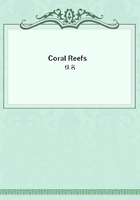
第94章
My information regarding the reefs of this area, is derived from various sources, and from an examination of numerous charts; especially of those lately executed during the survey under Captain Owen, R.N. I lay under particular obligation to Captain Bird Allen, R.N., one of the members of the late survey, for many personal communications on this subject. As in the case of the Red Sea, it is necessary to make some preliminary remarks on the submerged banks of the West Indies, which are in some degree connected with coral-reefs, and cause considerable doubts in their classification. That large accumulations of sediment are in progress on the West Indian shores, will be evident to any one who examines the charts of that sea, especially of the portion north of a line joining Yucutan and Florida. The area of deposition seems less intimately connected with the debouchement of the great rivers, than with the course of the sea-currents; as is evident from the vast extension of the banks from the promontories of Yucutan and Mosquito.
Besides the coast-banks, there are many of various dimensions which stand quite isolated; these closely resemble each other, they lie from two or three to twenty or thirty fathoms under water, and are composed of sand, sometimes firmly agglutinated, with little or no coral; their surfaces are smooth and nearly level, shelving only to the amount of a few fathoms, very gradually all round towards their edges, where they plunge abruptly into the unfathomable sea. This steep inclination of their sides, which is likewise characteristic of the coast-banks, is very remarkable: I may give as an instance, the Misteriosa Bank, on the edges of which the soundings change in 250 fathoms horizontal distance, from 11 to 210 fathoms; off the northern point of the bank of Old Providence, in 200 fathoms horizontal distance, the change is from 19 to 152 fathoms; off the Great Bahama Bank, in 160 fathoms horizontal distance, the inclination is in many places from 10 fathoms to no bottom with 190 fathoms. On coasts in all parts of the world, where sediment is accumulating, something of this kind may be observed; the banks shelve very gently far out to sea, and then terminate abruptly. The form and composition of the banks standing in the middle parts of the W. Indian Sea, clearly show that their origin must be chiefly attributed to the accumulation of sediment; and the only obvious explanation of their isolated position is the presence of a nucleus, round which the currents have collected fine drift matter. Any one who will compare the character of the bank surrounding the hilly island of Old Providence, with those banks in its neighbourhood which stand isolated, will scarcely doubt that they surround submerged mountains. We are led to the same conclusion by examining the bank called Thunder Knoll, which is separated from the Great Mosquito Bank by a channel only seven miles wide, and 145 fathoms deep. There cannot be any doubt that the Mosquito Bank has been formed by the accumulation of sediment round the promontory of the same name; and Thunder Knoll resembles the Mosquito Bank, in the state of its surface submerged twenty fathoms, in the inclinations of its sides, in composition, and in every other respect. I may observe, although the remark is here irrelevant, that geologists should be cautious in concluding that all the outlyers of any formation have once been connected together, for we here see that deposits, doubtless of exactly the same nature, may be deposited with large valley-like spaces between them.
Linear strips of coral-reefs and small knolls project from many of the isolated, as well as coast-banks; sometimes they occur quite irregularly placed, as on the Mosquito Bank, but more generally they form crescents on the windward side, situated some little distance within the outer edge of the banks:--thus on the Serranilla Bank they form an interrupted chain which ranges between two and three miles within the windward margin: generally they occur, as on Roncador, Courtown, and Anegada Banks, nearer the line of deep water. Their occurrence on the windward side is conformable to the general rule, of the efficient kinds of corals flourishing best where most exposed; but their position some way within the line of deep water I cannot explain, without it be, that a depth somewhat less than that close to the outer margin of the banks, is most favourable to their growth. Where the corals have formed a nearly continuous rim, close to the windward edge of a bank some fathoms submerged, the reef closely resembles an atoll; but if the bank surrounds an island (as in the case of Old Providence), the reef resembles an encircling barrier-reef. I should undoubtedly have classed some of these fringed banks as imperfect atolls, or barrier-reefs, if the sedimentary nature of their foundations had not been evident from the presence of other neighbouring banks, of similar forms and of similar composition, but without the crescent-like marginal reef: in the third chapter, I observed that probably some atoll-like reefs did exist, which had originated in the manner here supposed.